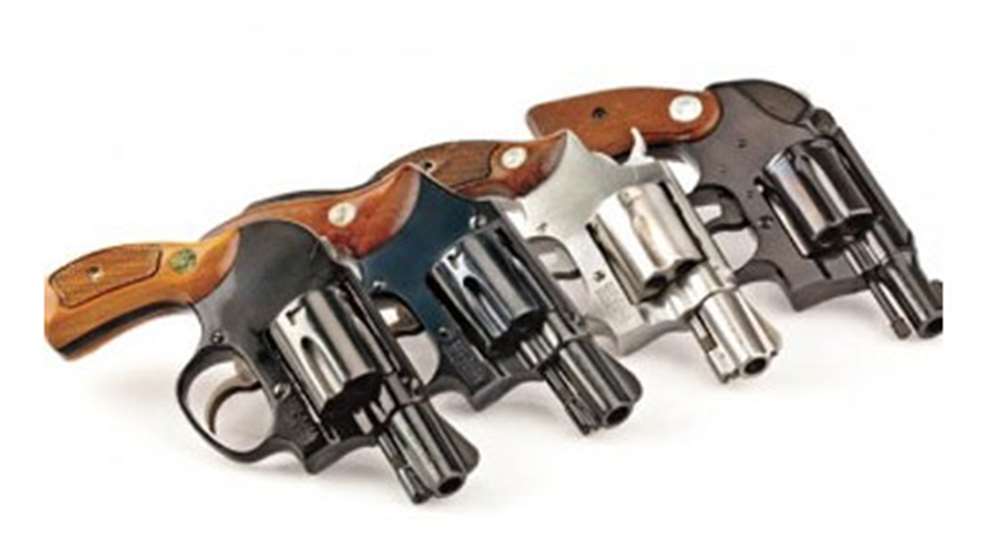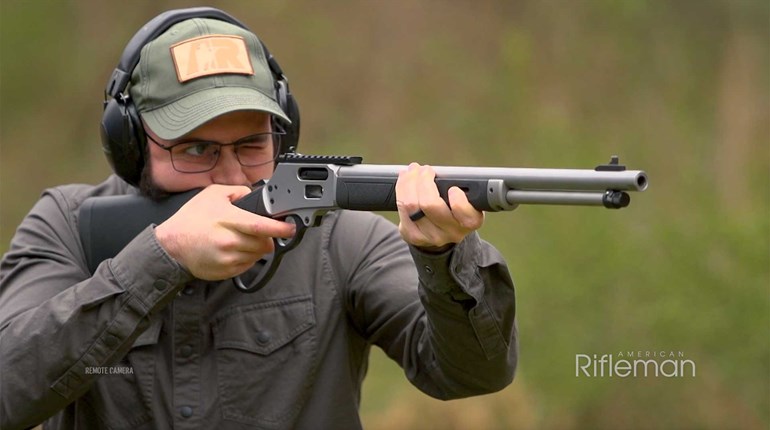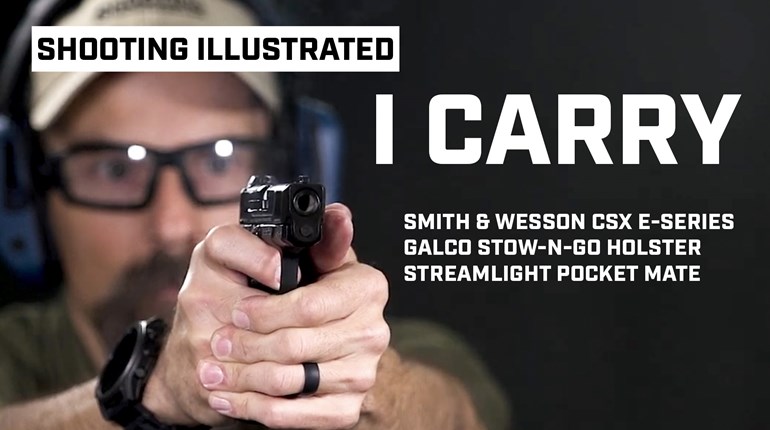
You are a mighty picky handgunner if you can't find a subcompact 9 mm or .380 ACP to suit your needs and preferences. In the past, I have been assigned to review these new guns and for the most part, it has been an interesting and educational experience. Still, I have to wonder if we aren't missing something in our rush to embrace all this new technology in subcompact semi-automatic manufacturing. Most of the new guns are admittedly made with polymer frames, which tend to annoy curmudgeons of my generation at the same time it delights the iPod crowd. There's nothing wrong with polymer frames, as Glock has so strongly established. What gives me pause is the tendency to rule out the great little snub-nose revolver as a dependable concealed-carry handgun.
Yeah, I know there are some ultra-modern snubby revolvers with polymer parts. Ruger is selling its LCR revolver and Smith & Wesson offers the Bodyguard 38, complete with its trendy laser. Taurus, the irrepressible Brazilian manufacturer, has several short-barreled, polymer wheelguns in its comprehensive catalog.
Sadly, Colt no longer offers revolvers other than the Peacemaker, a gun that's still a viable product some 138 years after its introduction. Therefore, I draw your attention to the used-gun tables of any gun show. Check out the price tags on old Cobras, Detective Specials and the like. It would seem the classic D-frame Colt still has a following willing to pay for that old-time quality.
This is not to suggest all revolver makers have discontinued their metal snub-nosed revolver lines, because they absolutely have not. Ruger has its all-steel SP101 and Smith & Wesson offers Chiefs Specials, Bodyguards and Centennials with steel and lightweight-alloy frames and Taurus still offers several varieties of its Model 85. It's not that the guns aren't available, but it is rather ominous when there is greater interest in semi-automatic pistols that can't match the revolver's reliability or ballistic performance.
That latter statement is likely going to draw some fire, so let's get the limits of the debate straightened out. In my book, the revolver is not a snubby unless the barrel tapes 2 inches or shorter. There were a number of Colt and Smith & Wesson short-barrel revolvers in the Frontier era, as well as some less popular brands. Most of these guns actually had barrels slightly longer than 2 inches—barrels that appeared balanced with the size of the frame. They were shortened for practical concealability, but the makers still wanted to offer small revolvers with visual appeal. A revolver, either solid-frame or break-top, looks ungainly with a barrel less than 2 inches. Some of the first of this breed were the so-called bicycle guns of Smith & Wesson's New Departure Safety Hammerless series, small numbers of which were made with super-short barrels. In the early 20th century, a few other models were offered from Smith & Wesson and Colt.
Beginning in the 1920s, however, both makers began to offer small- and medium-frame revolvers with short barrels that look almost the same as comparable guns made last week. Colt sold short versions of its Pocket Positive, Police Positive and longer-framed Police Positive Special. These models became popular police and civilian carry guns. Pre-World War II, Smith & Wesson offered 2-inch K-frames in .38 Spl. and the unique little I-frame Terrier in .38 S&W. These snubbies were assuredly nifty, but product lines exploded after World War II.
The biggest innovation of the post-war era was the development and use of weight-saving metals—for the most part, aluminum alloys. That was a giant step forward, as was Smith & Wesson's development of snubbies with alternative trigger/hammer systems: the (original) Bodyguard and Centennial revolvers. Eventually, the company also came up with improved metallurgy and strengthened frame contouring so they could safely chamber a small, light revolver for the mighty .357 Mag.
Size and weight are critically important factors in selecting a concealed-carry handgun, because a gun that's a problem to carry is a gun that won't be carried.
I said a snubbie revolver is superior to a pistol of comparable size on the grounds it enhances reliability and performance. Modern semi-autos are very reliable mechanisms and seldom produce problems. But the functioning of a semi-automatic is dependent on perfect ammo, proper lubrication and sometimes even a correct grip on the gun. In a semi-auto, there is much more going on in order to get repeated bangs. Even the smallest snubbie revolver comes with a DA trigger that is simplicity itself. They aren't perfect, but revolvers have a better track record in action.
And power? Now that we have lightweight snubbies chambered in .357 Mag., there is no comparably sized semi-automatic that can compete. One of the .357 revolver's greatest virtues is the wide assortment of ammunition that may be fired in the gun. Many shooters argue the flat-profile semi-automatic is easier to conceal, but their shape is basically two straight lines meeting at a slight angle. This tends to print through clothing.
Not surprisingly, I am a dedicated fan of the short revolver. I bought my first one and immediately began carrying it more than 40 years ago. Since then, I have generally had one in my pocket. I would really like to be able to spice up this account with a lurid tale of how it saved my life one dark night, but that never happened. Besides, if there had been a dark night when my life needed to be saved, I would have had to do it myself—the gun is just a tool. It is, however, my considered judgment that a Smith & Wesson Centennial cannot be improved upon as a piece of anywhere, anytime, any weather, any costume—always—fightin' iron.
Don't miss a moment of the action. Subscribe to Shooting Illustrated today!




































